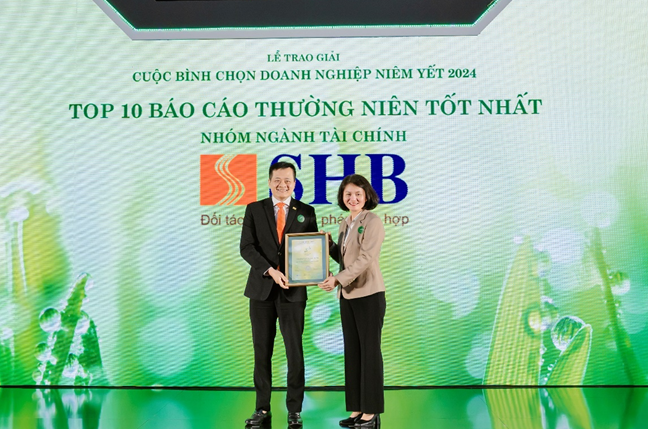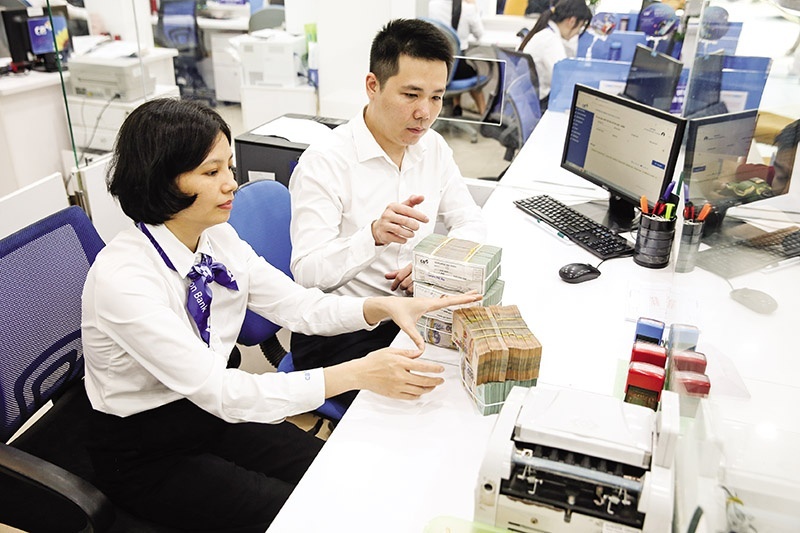Base rate’s holding pattern
With local lenders free to set lending rates, the base rate has almost been neglected, though it is still an official monetary signal.
Last week, the State Bank said it would keep the base interest rate unchanged at 8 per cent for June for the seventh consecutive month.
“Since the authority removed the lending rate cap in March, 2010, the base rate is no longer a big story in the market. It is now just a signal of monetary movement,” said Nguyen Thi Kim Thanh, head of the Banking Development Institute.
The base rate was kept unchanged in June even though inflation risks have eased off since the country’s consumer price index (CPI) in May rose slightly 0.27 per cent month-on-month, the lowest monthly increase in the past 12 months.
The CPI was up by 9.05 per cent from a year earlier and 4.55 per cent from the beginning of the year. The refinancing and rediscount rates were maintained at 8 and 6 per cent per year, respectively. Meanwhile, the new Credit Institutions Law is still under discussion at the National Assembly.
“The role of the base rate might change in the near future. If the National Assembly approves, it would no longer tie any rate cap to the banking system,” said Thanh. Previously, local banks were allowed to set mobilising and lending rates within 1.5 per cent of the State Bank’s monthly base rate. In May, the country’s government requested local commercial banks reduce deposit interest rates to below 10 per cent, per year and lending rates to around 12 per cent, per year to further boost local production.
At the moment, the average lending interest rate at 12 major commercial banks in Vietnam is 13.3 per cent, per year. In last week’s cabinet conference, Prime Minister Nguyen Tan Dung still labeled high deposit and loan rates and low credit growth as the main challenges for the economy.
Dung requested the State Bank taking urgent action to pull down interest rates, tighten bad debt ratios and maintain a sustainable foreign exchange rate. Pham Quoc Thanh, deputy general director of An Binh Bank, admitted the banking sector had been slow to extend loans.
“Lending rates might have to go down further by 0.5-1 per cent, per year to be acceptable for local businesses,” said Thanh. Over the first five months of 2010, according to State Bank data, credit grew by just 8 per cent while the government set the target credit growth this year at 25 per cent.
According to a Ministry of Planning and Investment report, Vietnam will attain a gross domestic product (GDP) growth rate of between 6.2 and 6.3 per cent in the second quarter of 2010 and the economy is likely to expand at 6.5-7 per cent in the third quarter making the full-year 6.5 per cent target achievable.
“Since the authority removed the lending rate cap in March, 2010, the base rate is no longer a big story in the market. It is now just a signal of monetary movement,” said Nguyen Thi Kim Thanh, head of the Banking Development Institute.
The base rate was kept unchanged in June even though inflation risks have eased off since the country’s consumer price index (CPI) in May rose slightly 0.27 per cent month-on-month, the lowest monthly increase in the past 12 months.
The CPI was up by 9.05 per cent from a year earlier and 4.55 per cent from the beginning of the year. The refinancing and rediscount rates were maintained at 8 and 6 per cent per year, respectively. Meanwhile, the new Credit Institutions Law is still under discussion at the National Assembly.
“The role of the base rate might change in the near future. If the National Assembly approves, it would no longer tie any rate cap to the banking system,” said Thanh. Previously, local banks were allowed to set mobilising and lending rates within 1.5 per cent of the State Bank’s monthly base rate. In May, the country’s government requested local commercial banks reduce deposit interest rates to below 10 per cent, per year and lending rates to around 12 per cent, per year to further boost local production.
At the moment, the average lending interest rate at 12 major commercial banks in Vietnam is 13.3 per cent, per year. In last week’s cabinet conference, Prime Minister Nguyen Tan Dung still labeled high deposit and loan rates and low credit growth as the main challenges for the economy.
Dung requested the State Bank taking urgent action to pull down interest rates, tighten bad debt ratios and maintain a sustainable foreign exchange rate. Pham Quoc Thanh, deputy general director of An Binh Bank, admitted the banking sector had been slow to extend loans.
“Lending rates might have to go down further by 0.5-1 per cent, per year to be acceptable for local businesses,” said Thanh. Over the first five months of 2010, according to State Bank data, credit grew by just 8 per cent while the government set the target credit growth this year at 25 per cent.
According to a Ministry of Planning and Investment report, Vietnam will attain a gross domestic product (GDP) growth rate of between 6.2 and 6.3 per cent in the second quarter of 2010 and the economy is likely to expand at 6.5-7 per cent in the third quarter making the full-year 6.5 per cent target achievable.
What the stars mean:
★ Poor ★ ★ Promising ★★★ Good ★★★★ Very good ★★★★★ Exceptional
Latest News
More News
- The promotion of ESG via banking (November 21, 2024 | 09:32)
- Standard Chartered committed to Vietnam’s financial success (November 21, 2024 | 09:24)
- Full ESG adoption the priority for Agribank (November 21, 2024 | 09:07)
- Banks entice youth with tech advances (November 21, 2024 | 08:00)
- Banks shaping the future as business advisors (November 20, 2024 | 21:00)
- ESG represents a shift towards sustainability for banks (November 20, 2024 | 13:00)
- GGGI supports Vietcombank’s debut of $80 million green bonds (November 20, 2024 | 11:20)
- SHB and the ESG journey: creating social value in every step (November 19, 2024 | 15:00)
- Banking sector contributes to ESG, green growth, and sustainable development (November 19, 2024 | 14:42)
- ESG implementation in banking: from awareness to action (November 19, 2024 | 12:08)

















 Mobile Version
Mobile Version